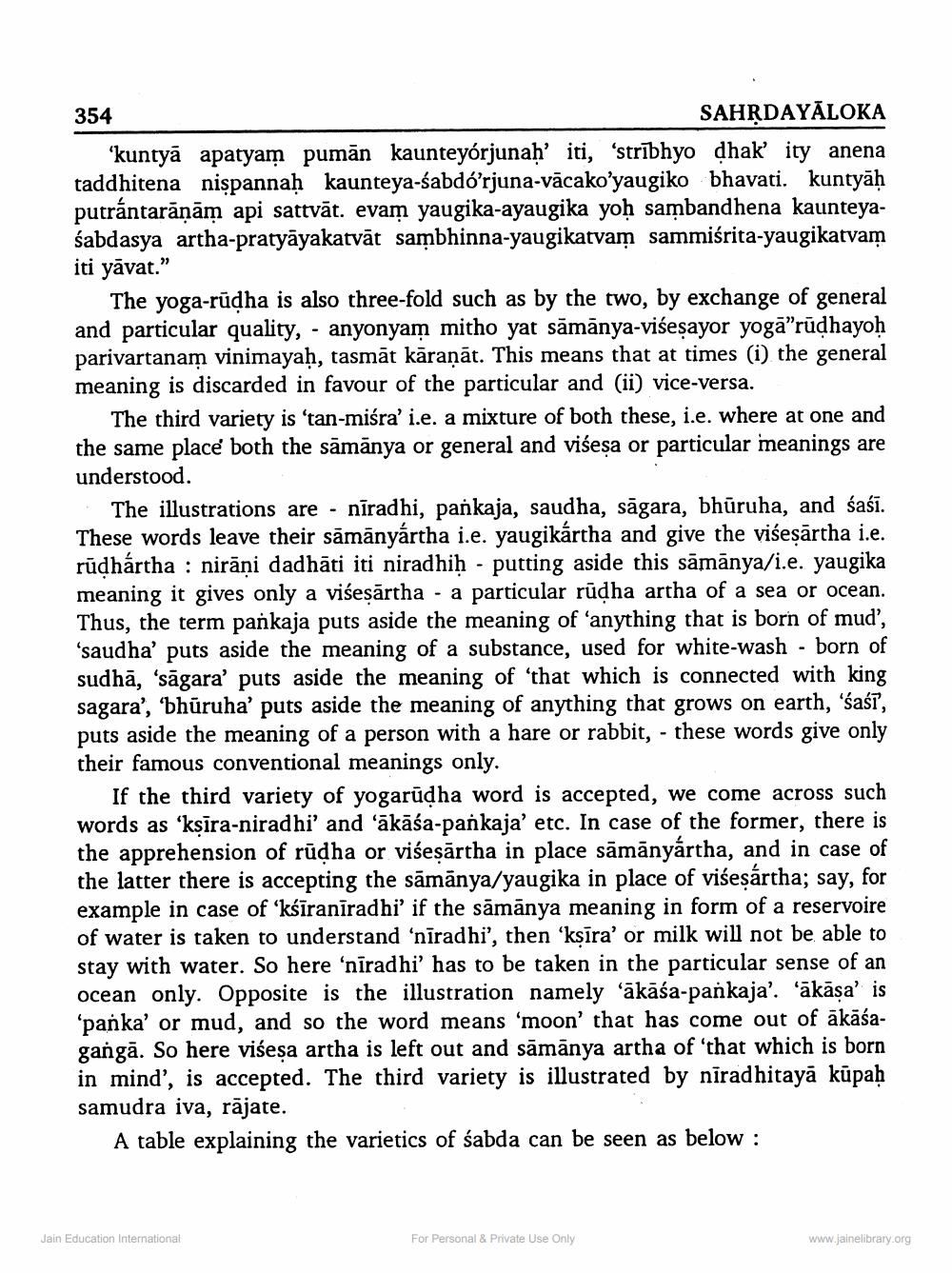________________
354
SAHRDAYĀLOKA 'kuntyā apatyam pumān kaunteyórjunaḥ'iti, 'strībhyo dhak’ity anena taddhitena nişpannaḥ kaunteya-śabdó’rjuna-vācako'yaugiko bhavati. kuntyāḥ putrántarāņām api sattvāt. evam yaugika-ayaugika yoḥ sambandhena kaunteyaśabdasya artha-pratyāyakatvāt sambhinna-yaugikatvam sammiśrita-yaugikatvam iti yāvat.”
The yoga-rūdha is also three-fold such as by the two, by exchange of general and particular quality, - anyonyam mitho yat sāmānya-viśesayor yogā”rūdhayoh parivartanam vinimayaḥ, tasmāt kāraṇāt. This means that at times (i) the general meaning is discarded in favour of the particular and (ii) vice-versa.
The third variety is 'tan-misra' i.e. a mixture of both these, i.e. where at one and the same place both the sāmānya or general and viśesa or particular imeanings are understood.
The illustrations are - nīradhi, pankaja, saudha, sāgara, bhūruha, and śaśī. These words leave their sāmānyártha i.e. yaugikártha and give the višesārtha i.e. rūdhártha : nirāņi dadhāti iti niradhiḥ - putting aside this sāmānya/i.e. yaugika meaning it gives only a viśesārtha - a particular rūdha artha of a sea or ocean. Thus, the term pankaja puts aside the meaning of 'anything that is born of mud', 'saudha' puts aside the meaning of a substance, used for white-wash - born of sudhā, 'sāgara' puts aside the meaning of 'that which is connected with king sagara', 'bhūruha' puts aside the meaning of anything that grows on earth, 'Śaśī, puts aside the meaning of a person with a hare or rabbit, - these words give only their famous conventional meanings only.
If the third variety of yogarūdha word is accepted, we come across such words as 'kşīra-niradhi' and 'ākāśa-pankaja' etc. In case of the former, there is the apprehension of rūdha or viśeşārtha in place sāmānyártha, and in case of the latter there is accepting the sāmānya/yaugika in place of viseșártha; say, for example in case of ‘kšīranīradhi' if the sāmānya meaning in form of a reservoire
ater is taken to understand 'nīradhi', then ‘ksīra' or milk will not be able to stay with water. So here 'nīradhi' has to be taken in the particular sense of an ocean only. Opposite is the illustration namely 'ākāśa-pankaja'. 'ākāsa' is 'panka' or mud, and so the word means 'moon' that has come out of akāśagangā. So here višeşa artha is left out and sāmānya artha of 'that which is born in mind', is accepted. The third variety is illustrated by niradhitayā kūpah samudra iva, rājate.
A table explaining the varietics of śabda can be seen as below :
Jain Education International
For Personal & Private Use Only
www.jainelibrary.org




